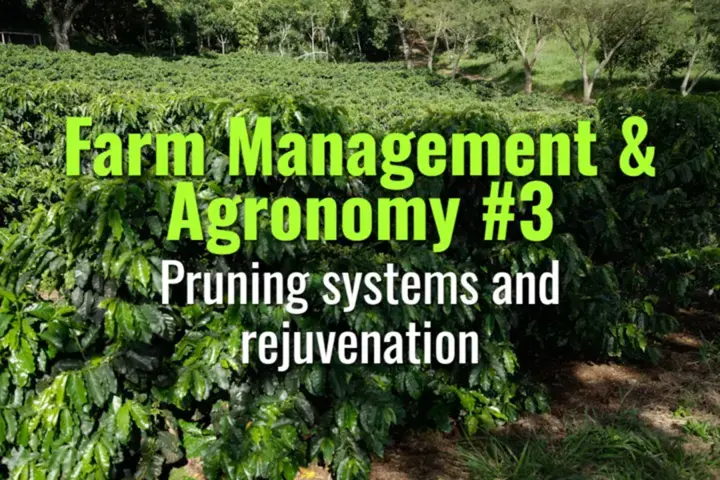Pruning systems and rejuvenation
This topic explains the different pruning systems used in coffee cultivation, why pruning is essential for productivity and quality, and how rejuvenation extends the life of coffee trees.
- Coffee Basics Nerds
- 2 min read
Article 3 of 12 in Farm Management & Agronomy/

Importance of Pruning
- Coffee naturally develops many stems and branches, which can reduce productivity if unmanaged.
- Pruning regulates growth, improves light penetration, reduces disease, and promotes new, fruitful shoots.
- Maintains tree height for easier harvesting.
Types of Pruning
1. Maintenance Pruning
- Regular removal of unproductive, dead, or crossing branches.
- Improves airflow and reduces disease pressure.
- Encourages better fruit distribution.
2. Structural Pruning
- Shapes the tree to desired height and form.
- Common systems:
- Single-stem system: One vertical trunk, pruned for height control; common in mechanized systems.
- Multi-stem system: Several stems per stump, pruned cyclically; traditional in Latin America and Africa.
3. Sucker Control
- Removal of unwanted shoots (“suckers”) that drain resources but do not contribute to yield.
- Done regularly during the growing season.
4. Stumping (Rejuvenation Pruning)
- Cutting the tree back to 30–50 cm above ground to regenerate new shoots.
- Typically applied every 6–8 years depending on variety and management.
- Allows old, unproductive trees to restart a new cycle of growth.
5. Skeleton Pruning
- Cutting back main branches while leaving the trunk intact.
- Used when plants are weakened but root system is strong.
Rejuvenation Cycles
- Coffee trees lose vigor after 20–30 years if unpruned.
- Rejuvenation through stumping or cyclical pruning maintains plantation productivity.
- Farmers often stagger rejuvenation across plots to avoid total yield loss in one season.
Regional Practices
- Latin America: Multi-stem pruning with cyclical stumping.
- Africa: Combination of skeleton pruning and multi-stem approaches.
- Asia: Often integrates pruning with shade management in agroforestry systems.
Benefits of Pruning
- Stimulates new productive growth.
- Controls plant size, making harvesting and spraying easier.
- Reduces pests and diseases by eliminating dense, shaded canopies.
- Prolongs economic life of trees.
Lasting Importance
Pruning systems and rejuvenation are cornerstones of coffee agronomy. They sustain yields, improve bean quality, and extend plantation lifespan, ensuring farms remain productive and profitable over decades.